The board at a glance
Now let's look at the board. What is striking is the excess of coils, which are arranged together like a string of pearls. In terms of marketing, one writes of 16 phases for the GPU, which is of course nonsense, because there are actually only eight. However, since two individual converter circuits are controlled per phase by means of phase doubling, there are at least 16 voltage converters for the GPU alone.
We see a total of 16 control circuits arranged for 8 phases among each other, but the three phases for memory move to the left behind the coils of the GPU converters. This is a bit unfortunate for the cooling, because you have to deal with the emerging hotspots first. But we'll see what happens (or not).
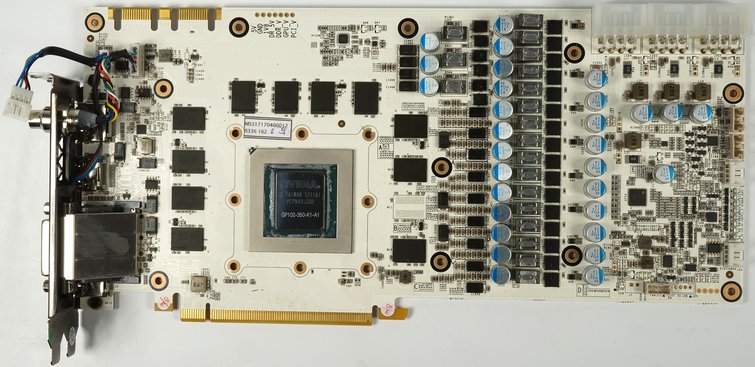
Of course, the eight real phases for the GPU also need the right PWM controller, where you don't rely on a uP9511 from uPI Semiconductor, but on an IR 3595A from International Rectifier, which according to the graphics card manufacturer offers more settings. . However, OpenVReg 4+ is also on board with this chip. By means of suitable phase doubler, two parallel working circles are controlled with a PowIRStage chip IR3555, which contains the two MOSFETs for high and low-side, as well as a Schottky diode. There are therefore 16 single voltage transformer circuits, two of which are controlled in parallel and not 16 individual phases, dear PR.
 |
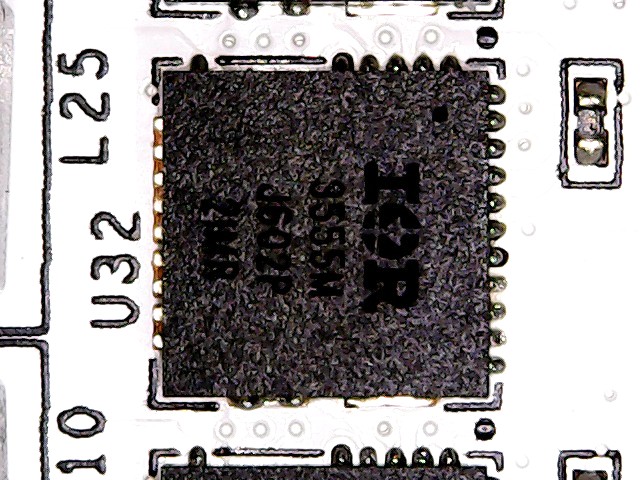 |
The encapsulated and vertically aligned ferrite core coils are old acquaintances and help to elegantly solve the space problem on the board for at least 16 inter-arranged interchangeable converter circuits.
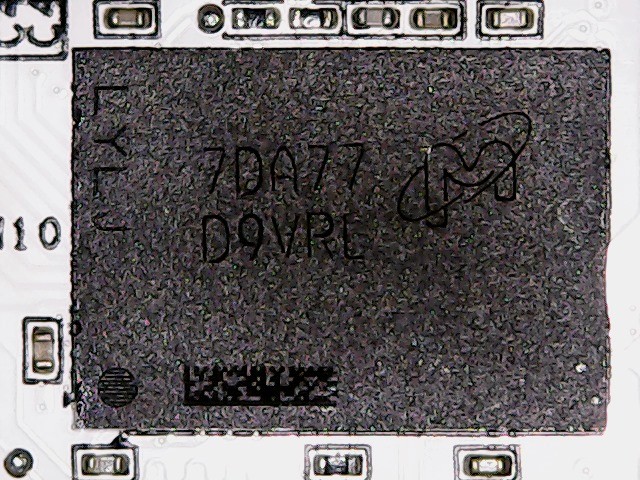 A total of 11 of the new G5X-Micron modules of type MT58K256M321-Ja110, which offer up to 11 GByte/s and are therefore intended to compensate the missing 32 bits of the memory interface with a higher clock speed of 5500 MHz (effectively), are installed on this card. As always, we are surprised that Nvidia did not install the MT58K256M321-Ja120, which clocks a little higher.
A total of 11 of the new G5X-Micron modules of type MT58K256M321-Ja110, which offer up to 11 GByte/s and are therefore intended to compensate the missing 32 bits of the memory interface with a higher clock speed of 5500 MHz (effectively), are installed on this card. As always, we are surprised that Nvidia did not install the MT58K256M321-Ja120, which clocks a little higher.
The power supply of the memory is located, as already described, at the top left of the GPU-VR and is solved via an uP9509 from uPI Semiconductor, which as a buck controller can provide the total of three phases.
For each of the three phases, one again relies on an MDU1514 on the high-side and one MDU1511 on the low-side. The same components used as coils are used for the GPU's voltage converters. For these high components, too, corresponding openings exist in the mounting frame.
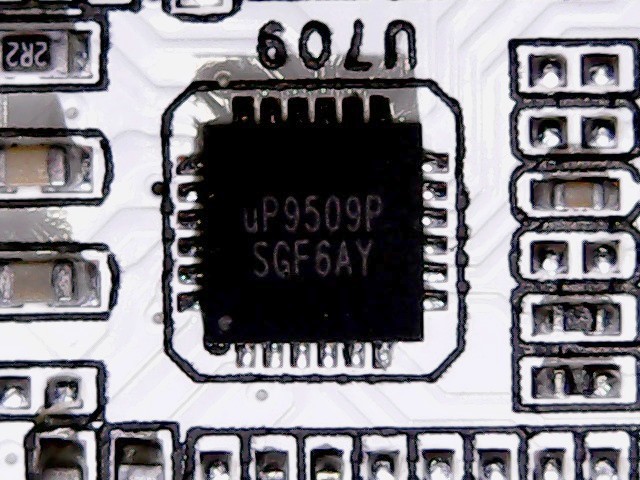 |
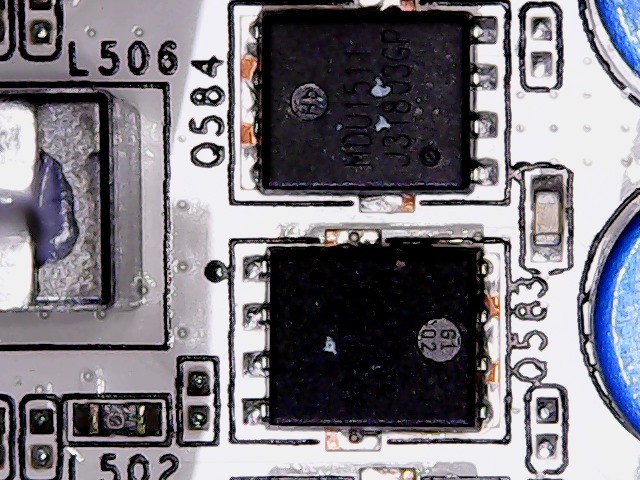 |
The usual INA3221 is a monitoring chip for the flowing currents, as well as the adjacent voltages and in the end also protects the technology from overloads. However, the manufacturer has installed two of these chips. Three shunts in the entrance area are used to determine the current flow to be monitored and with the three LC filters behind the three 8-pin power sockets there is even some kind of filtering of the spikes, which can be well liked and cheaper power supplies strongly should be accommodating.
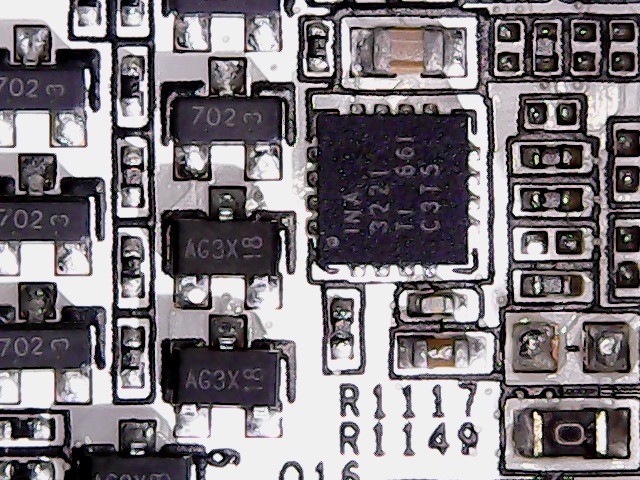 |
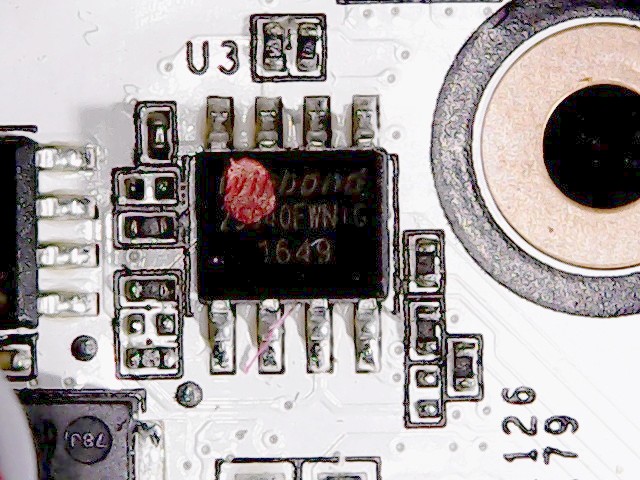 |
The back shows once again the linear arrangement of the components among each other, which also accommodates the cooling through the backplate.
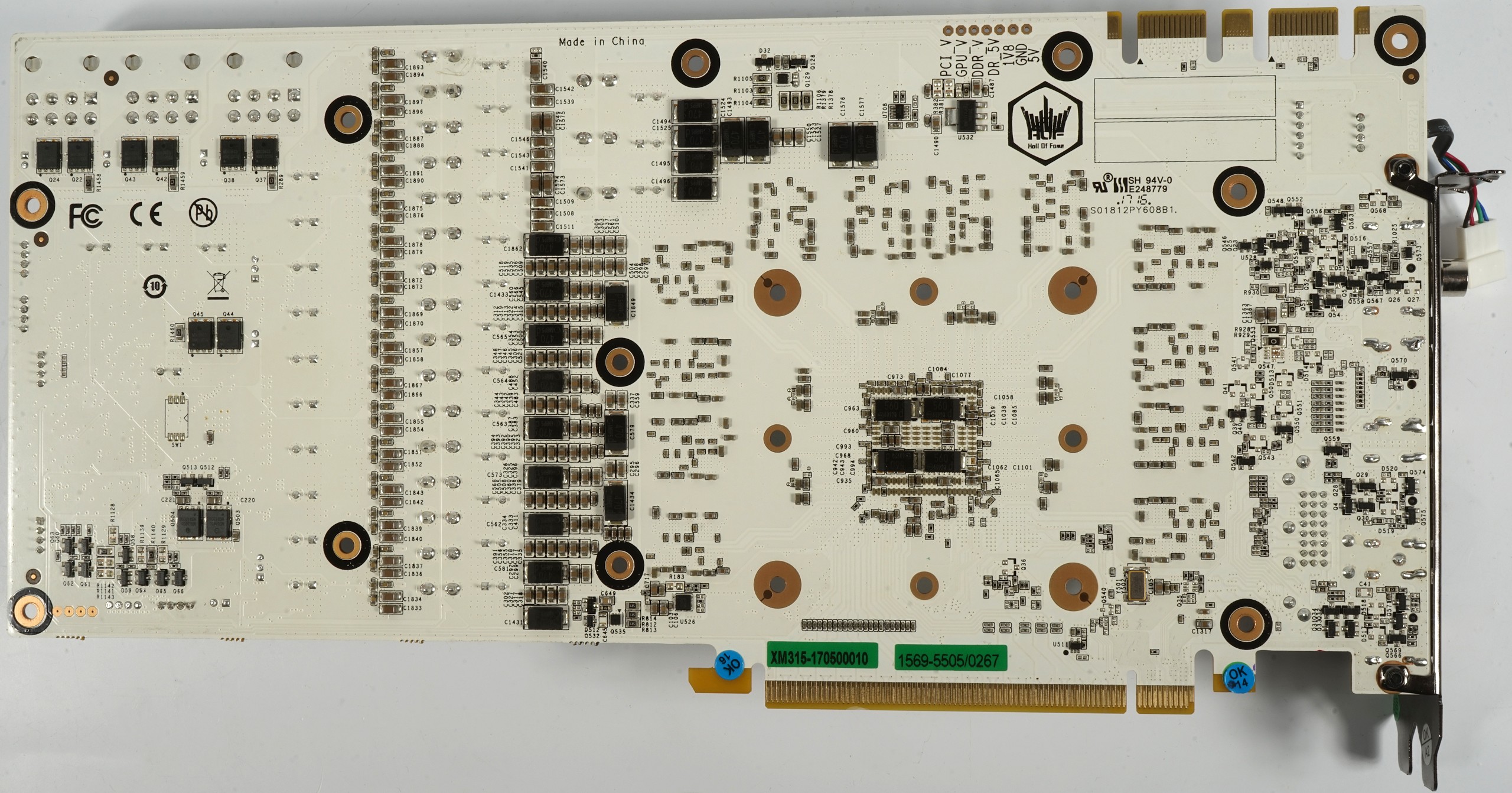
Cooling concept and implementation
The used and blackened inside backplate is used for the optics and stabilization of the radiator structure to the same extent as for passive cooling.
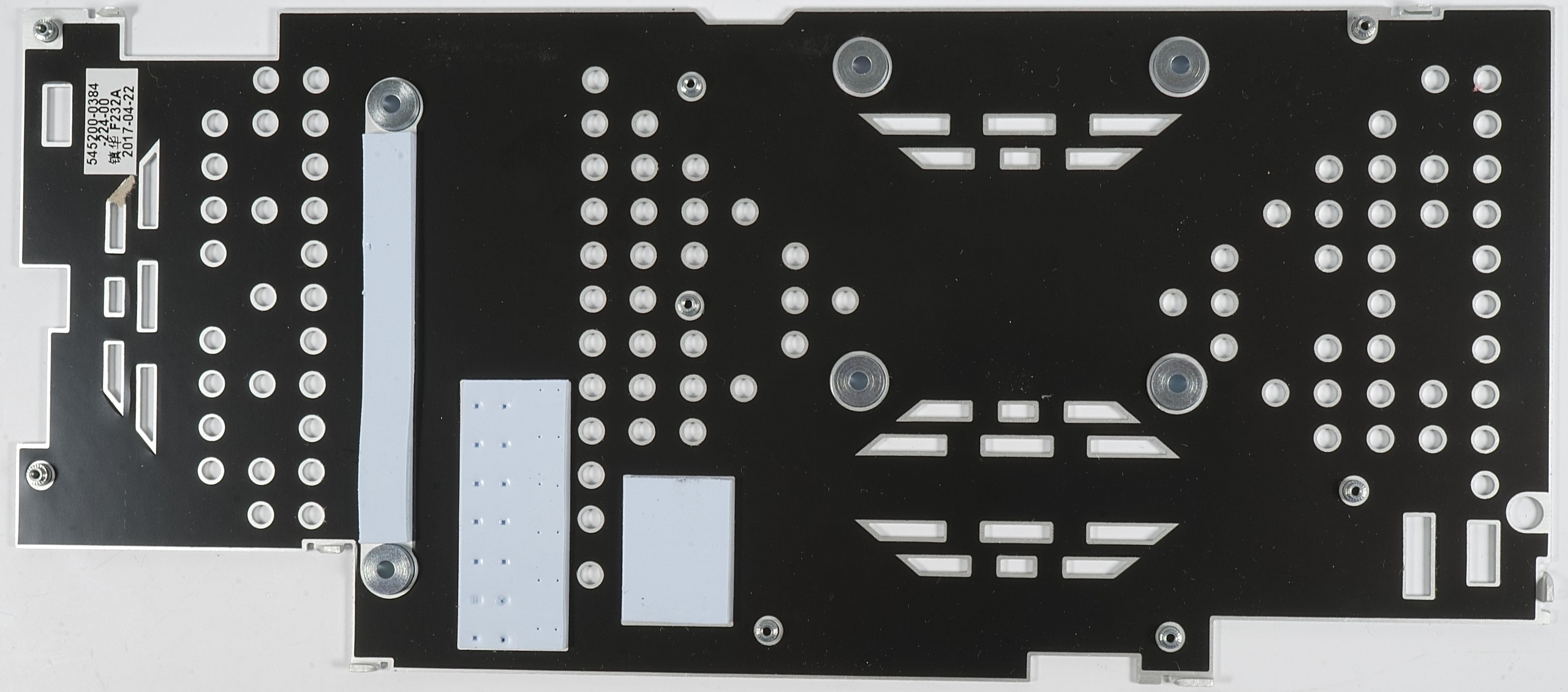
We already mentioned that there is no heat sink integrated in the main cooler for the voltage converters. This part must be used, as in the case of e.g. MSI and EVGA also release an assembly frame between the radiator and the board, which we also like to call a sandwich plate. However, this concept is abundantly borderline in these areas of performance, as we shall see later.
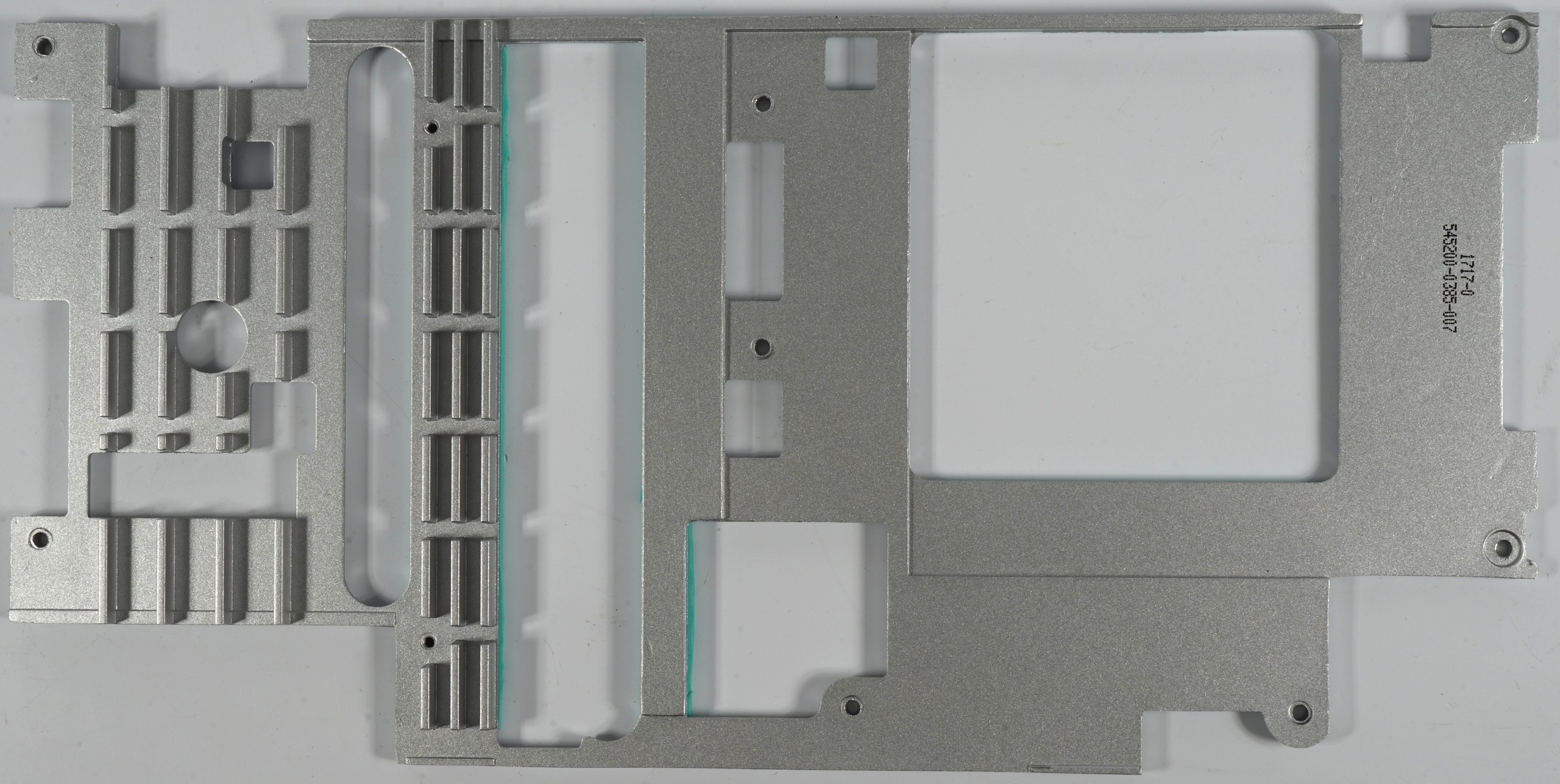 |
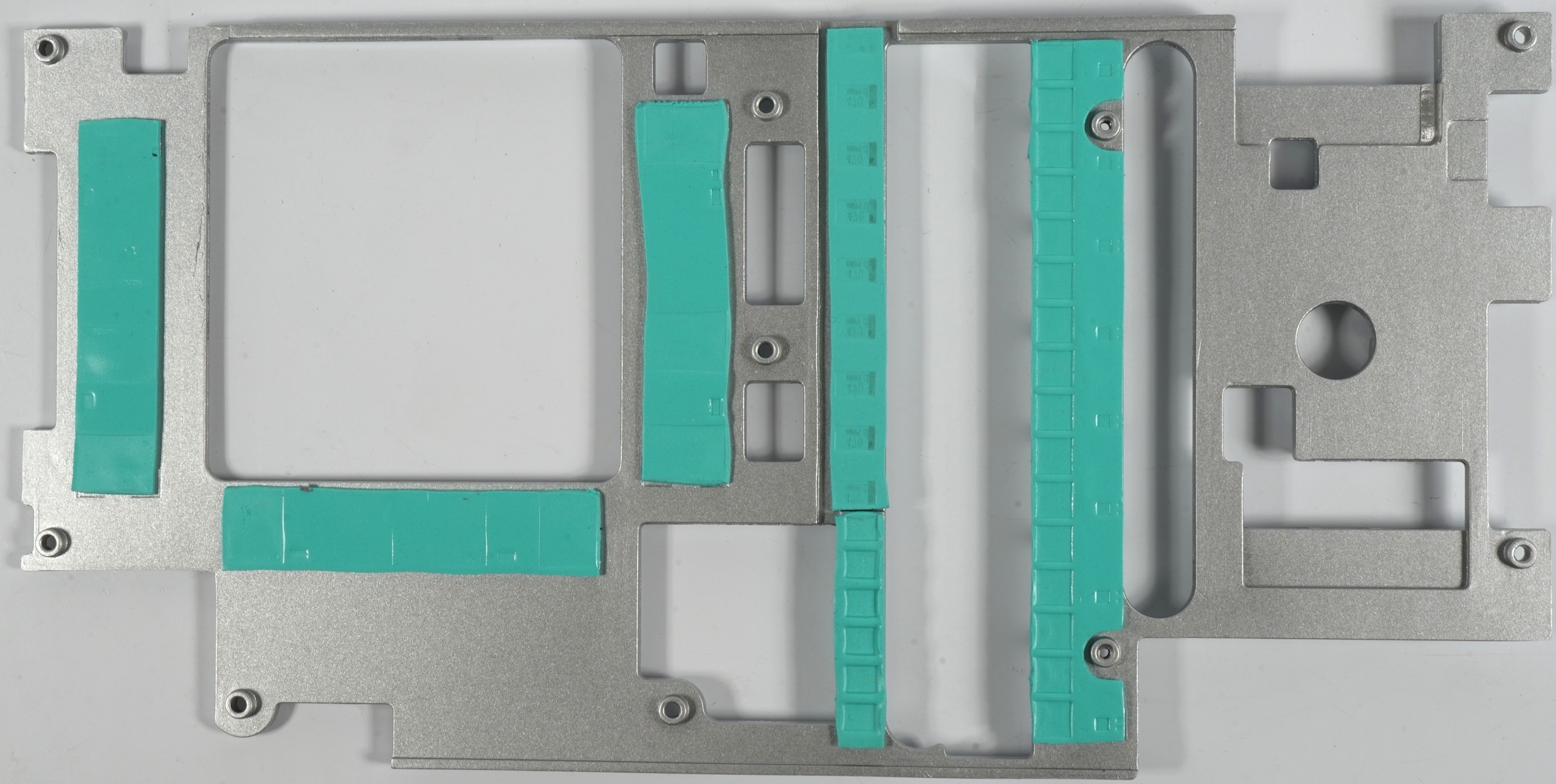 |
The cooler itself is a huge and above all heavyweight Bolide, whose copper heat sink feeds a total of four 8 mm and a 6 mm heatpipe made of composite material with the absorbed GPU waste heat. The memory modules are cooled by a circumferential copper plate, which is attached to the brushed heat sink.
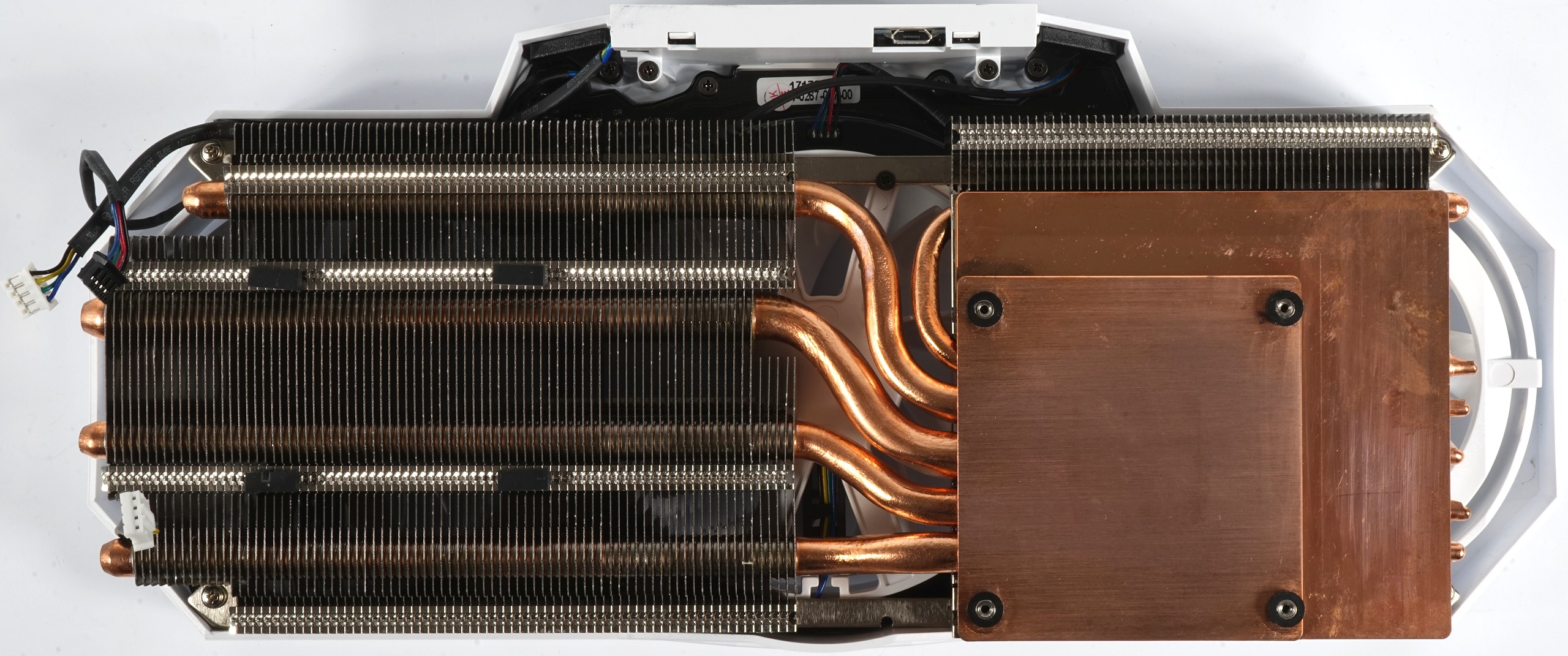
The three 90 mm fans used, with their 9, fairly steeply employed rotor blades per fan, are designed for throughput rather than for pure uniform static pressure. However, we will have to come back to these fans later, when it comes to fan control and speeds, because there is some need for clarification.


































Kommentieren